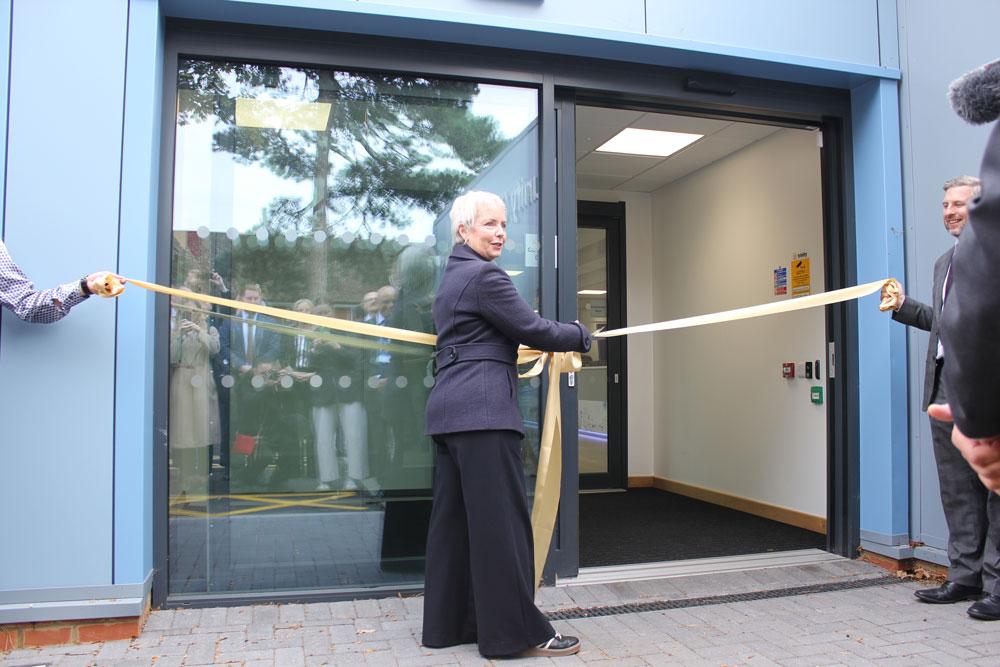Cameron Hawkins, head of Energy and Environment at NHS Property Services, explains how the NHS remains a core pillar in the UK’s net zero strategy
In the aftermath of COP26, we have seen the most ambitious global climate commitments to date, including a landmark pledge from all four UK health services to achieve net zero and build climate resilience. This is a huge opportunity to cut the global carbon footprint as health systems account for approximately five per cent of global emissions – if they were a country, they would be the fifth largest emitter in the world.
The NHS therefore remains a core pillar in the UK’s net zero strategy, as it is responsible for approximately four per cent of the UK's carbon emissions every year. The NHS estate is an integral part of the health system’s efforts to become more sustainable and reduce its carbon footprint. As owners of approximately 10 per cent of the NHS estate, including hospitals, health centres and clinics, we at NHS Property Services (NHSPS) have welcomed this challenge to support the NHS to reduce its environmental impact and realise its ambition of becoming the first net zero national health system.
Prior to the net zero commitments from COP26, we launched our three-year energy and environment strategy in 2019 to spearhead our efforts to reduce our organisation’s carbon footprint, which included around 200 actions, such as improving transport efficiencies, increasing recycling, reducing waste and single-use plastic, improving water efficiency and, importantly, reducing carbon emission. We recently undertook a “Greener NHS Review” and identified substantial improvements that have been made across the estate which we will explore further in this article.
Net zero new builds
Alongside the need to decarbonise the health estate, it is crucial that the NHS estate’s capacity continues to increase in order to accommodate the UK’s ever-growing population and the ongoing pressures of the Covid-19 pandemic facing the health service.
To ensure extra capacity is provided, the government has committed to building 40 new hospitals, all of which must be net zero carbon buildings. We are therefore reviewing how to make our newly built health centres, clinics and GP surgeries net zero moving forwards.
This is not a new concept for us however, as we are in the process of developing a net zero health centre. Construction began on Devizes Health Centre earlier this year, and, once the development is complete, the centre will become one of the first net zero health centres in England. Upon completion, this important project will provide space for the Wilshire Clinical Commissioning Group to offer primary care to the local community.
Heat pumps and solar panels will be among the green technology used at the site and will enable the building to generate its own heating and electricity respectively, leading the way in sustainable design. These renewable technologies are hugely beneficial not only in terms of conserving resources and optimising energy efficiency, but are highly reliable and will sustain the site for years to come.
Energy
For hospitals that run 24 hours a day, 365 days a year, a reliable, uninterrupted source of energy is essential. It was crucial for us to consider this when making the switch to renewable energy. Last year, we arranged a new energy supply deal that introduced 100 per cent renewable energy across our building portfolio. The move to a flexible trading strategy, and the negotiation of these new energy supply contracts, has meant this has been achieved at no additional cost to tenants. These changes have helped offset more than 37,000 tonnes of carbon dioxide a year, and reduced costs by 12 per cent, equating to around £8.9 million over the first two years; money that can be invested back into the NHS.
In addition to switching to 100 per cent renewable electricity, we are in the process of integrating LED lighting across our sites, with over 70 sites already benefitting. Over two years, we have invested more than £6 million in stand-alone LED projects, as well as maintaining existing installations, saving £2 million and offsetting 2,500 tonnes of carbon a year.
Reducing the overall energy consumption of the NHS estate is a complex process which requires communication and collaboration with our customers, the building occupiers, as these occupiers will play a key role in ensuring efficient energy usage. Most of our tenants are healthcare providers, whose primary focus will be on patient care. While this should absolutely be the primary concern of healthcare providers, ensuring we reduce our carbon footprint will also impact the lives of patients both today and tomorrow. Highlighting the importance of sustainability to our customers is integral in ensuring we meet the net zero goals of the NHS.
In order to ensure we are reaching our customers, we launched an engagement programme that involves upskilling engineers and providing them with energy packs that they can use to work with tenants and advise them on the steps they can take to be more energy efficient in how they occupy our buildings. The first two years of this programme resulted in a significant saving of 11,800 tonnes of carbon and over £3 million. We are passionate about ensuring that this momentum continues.
Heat
A further challenge we have faced is how to decarbonise the NHS estate’s heat sources, particularly in old hospitals that are designed to run on steam boilers.
It is particularly difficult to implement technologies such as solar power and heat pumps with an ageing estate, as the condition of existing buildings often limit the feasibility of installing these alternative heat sources. There is no perfect solution, but we are committed to identifying the best ways to reduce our footprint, nonetheless.
For example, we are exploring power purchase agreements (PPAs) as a promising way to support decarbonising the estate. PPAs are long-term electricity supply arrangements, which are usually made between a generator and a customer. They are a cost-effective way of increasing supply on site if installed locally, removing carbon from the grid, and ensuring running costs are kept to a minimum. This is because under a PPA, we will lease roof space to an energy supplier to install solar panels and buy the energy produced back. As such, we can further utilise our assets and support the move to green energy, without the need of a large capital outlay.
Although the end goal would be to remove gas entirely, we know this is unlikely until hydrogen or a high-temperature electrical heat source becomes a widely available, cost-effective option. While we await this, we are committed to finding ways to reduce our reliance on gas.
On behalf of myself and the whole NHSPS team, we look forward to completing our three-year energy strategy and continuing to implement sustainable improvements across the NHS estate to transform the NHS into a net zero health system.





